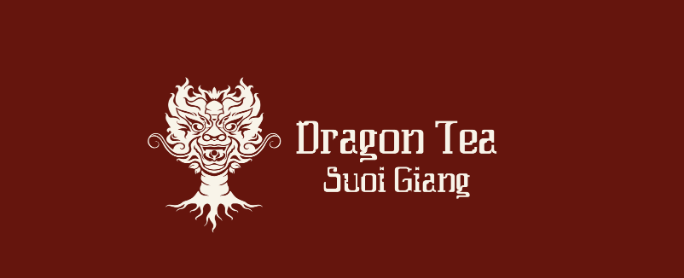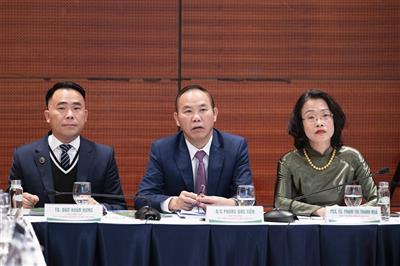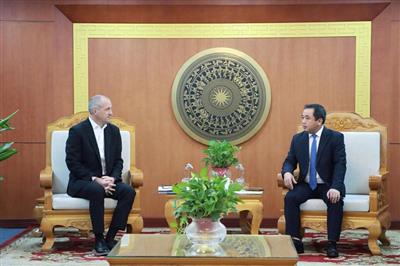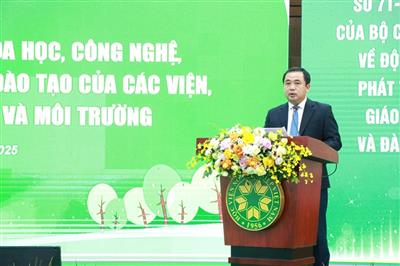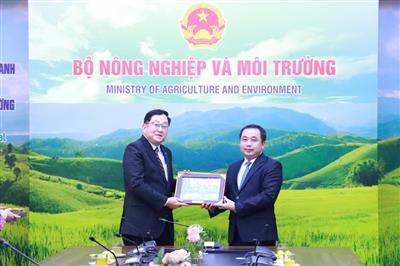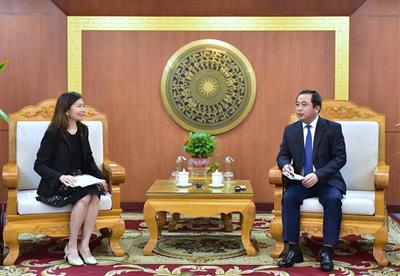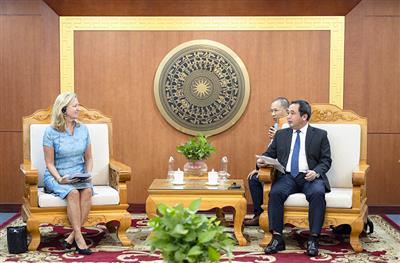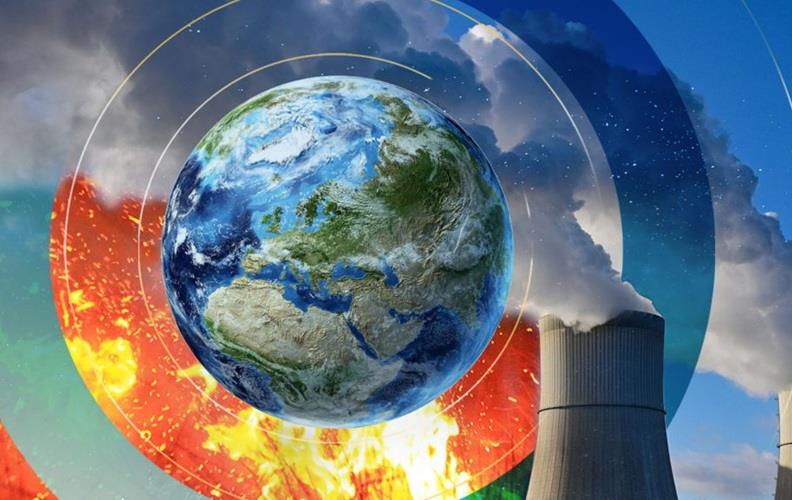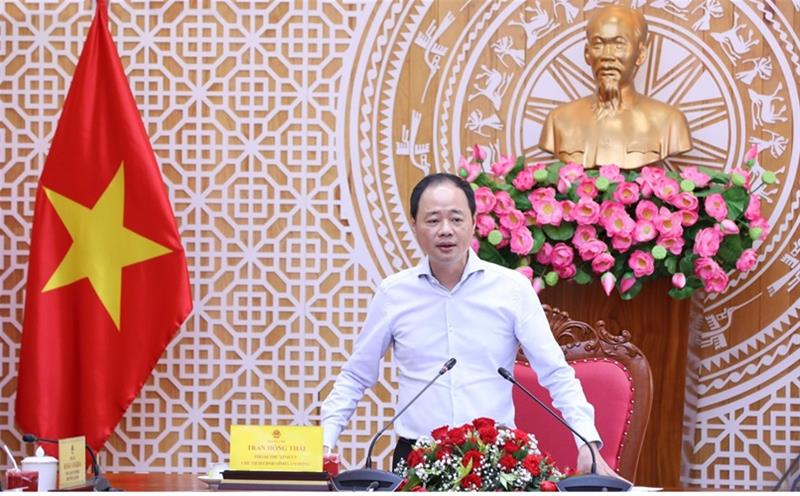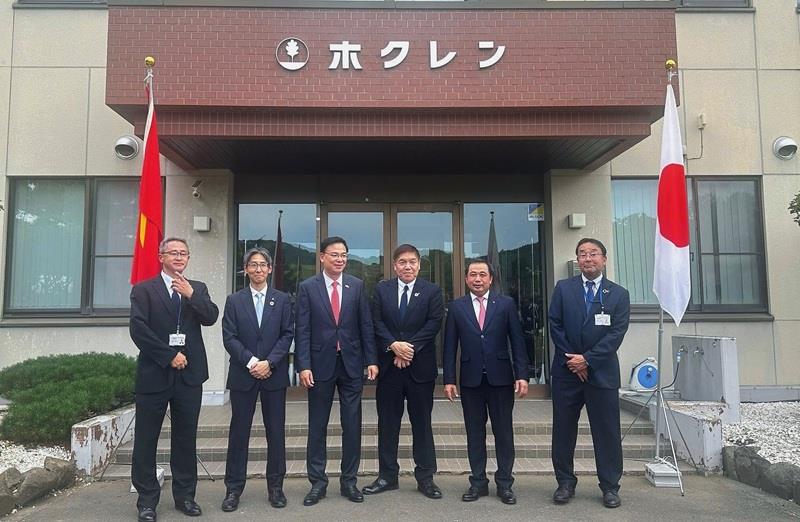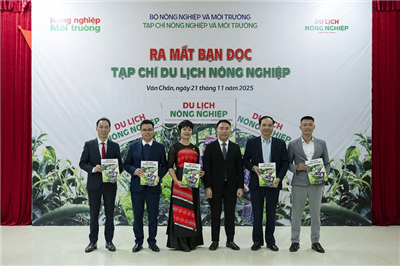
Enhancing content quality and scientific scores of the Natural Resources and Environment Magazine
04/12/2024TN&MTOn November 28, 2024, in Hanoi, the Natural Resources and Environment Magazine (under the Ministry of Natural Resources and Environment) organized a workshop titled “Enhancing the content quality and scientific scores of the Magazine”. During the event, scientists, journalists, and experts contributed practical opinions and effective solutions to improve the quality of content and scientific scores of the print edition of the Journal of Natural Resources and Environment. Dr. Dao Xuan Hung, Editor-in-Chief of the magazine, chaired the workshop.
The workshop was attended by: Assoc. Prof. Dr. Nguyen Dinh Tho, Director of the Institute of Strategy and Policy on Natural Resources and Environment; Assoc. Prof. Dr. Pham Thi Thanh Nga, Director of the Institute of Meteorology, Hydrology, and Climate Change; Prof. Dr. Dao Manh Hung, former Director of the Department of Training (Ministry of Culture, Sports, and Tourism) and Secretary of the Interdisciplinary Professorial Council on Culture, Arts, and Physical Education; Assoc. Prof. Dr. Mai Quynh Nam, former Director of the Institute of Human Studies (Vietnam Academy of Social Sciences), former Editor-in-Chief of Sociology Journal and Human Studies Journal; Assoc. Prof. Dr. Duong Xuan Son, lecturer at the Institute of Journalism and Communication (University of Social Sciences and Humanities); Dr. Pham Thi My, Editor-in-Chief of Health and Environment Journal; Mr. Nguyen Van Huong, Editor-in-Chief of Transport Journal; Mr. Hoang Ha, Editor-in-Chief of Cultural and Artistic Journal; Mr. Ly Ngoc Thanh, Deputy Editor-in-Chief of Construction Journal; M.A. Le The Chien, Deputy Editor-in-Chief of Inspectorate Journal; Dr. Pham Ngoc Anh, Head of the Information and Communications Department, Office of the Ministry of Natural Resources and Environment; as well as other journalists, experts, scientists, and staff from the Ministry of Natural Resources and Environment, together with leaders, editors, reporters, and employees of the Natural Resources and Environment Magazine.

Dr. Dao Xuan Hung, Editor-in-Chief of the Natural Resources and Environment Magazine, delivering the opening speech at the workshop
In his opening speech, Dr. Dao Xuan Hung, Editor-in-Chief of the Natural Resources and Environment Magazine, said that with the close guidance of the Ministry’s leadership, the journal has made progress in both content quality and publication frequency. Initially published once a month, the print journal now releases two issues per month. A digital version was launched in October 2021, followed by an English-language digital edition in October 2023. Recently, the magazine celebrated its 21st anniversary at the Huynh Thuc Khang School of Journalism in Thai Nguyen Province and organized an in-depth discussion to enhance the quality of its publications.
As the theoretical, political, scientific, and professional organ of the Ministry of Natural Resources and Environment, the magazine has undergone 21 years of development. Despite the collective efforts of its staff and generations of leaders, it has yet to achieve a high scientific score. Developing a specialized journal covering the nine fields of state management under the Ministry requires significant resource investment and the application of scientific, effective organizational methods.
On this foundation, the journal, through today’s workshop, seeks contributions from scientists, journalists, and experts from diverse perspectives to propose solutions and provide a new vision and direction. This will contribute to improving the quality of the print journal, closely linking content quality with scientific scores, which serve as a key metric for evaluating the journal’s academic content in fulfilling its professional mission.

Ms. Tran Thi Cam Thuy, Deputy Editor-in-Chief of the Natural Resources and Environment Magazine
In her keynote report, Ms. Tran Thi Cam Thuy, Deputy Editor-in-Chief of the Natural Resources and Environment Magazine, noted that according to Decision No. 25/QD-HĐGSNN dated July 5, 2024, by the State Professorial Council, 28 disciplinary and interdisciplinary professorial councils have been approved to include journals in their scoring lists. However, the Natural Resources and Environment Magazine is currently only recognized for scoring in two councils: the Interdisciplinary Professorial Council on Chemistry-Food Technology and the Professorial Council on Biology.
This situation demands comprehensive innovation in how the journal is organized and published. Urgent measures include setting high standards for scientific articles, implementing effective communication plans, strengthening submission, review, and editing processes, and establishing a dedicated Scientific Council. Financial investment, especially offering attractive remuneration for high-quality articles, is also crucial for the journal’s advancement.

Prof. Dr. Dao Manh Hung, former Director of the Department of Training (Ministry of Culture, Sports, and Tourism) and Secretary of the Interdisciplinary Professorial Council on Culture, Arts, and Physical Education
During the discussion, Prof. Dr. Dao Manh Hung, Secretary of the Interdisciplinary Professorial Council on Culture, Arts, and Physical Education, observed that while the journal landscape is diverse, attracting readers and researchers depends heavily on content quality. To enhance its appeal, the Mgazine should expand its research scope beyond its core fields to explore relationships with other societal sectors, such as culture, healthcare, and social factors. Such interdisciplinary expansion enriches the journal’s content, attracts scientists from various fields, and increases its recognition in interdisciplinary professorial councils.
Prof. Dr. Dao Manh Hung also suggested strengthening the Editorial Board by including reputable professors and researchers with high academic credentials. A strong Editorial Board not only ensures content quality but also builds trust among readers. Additionally, he emphasized the importance of a team dedicated to quality control to meet international research standards. On design, the journal should prioritize simplicity and elegance while maintaining scientific rigor. Experienced designers from prestigious journals could be engaged to enhance professionalism from the cover to the layout. Each article should also feature author profiles and English abstracts, making the journal more accessible to international audiences and emphasizing its academic value.

Assoc. Prof. Dr. Mai Quynh Nam, former Director of the Institute of Human Studies (Vietnam Academy of Social Sciences), former Editor-in-Chief of Sociology Journal and Human Studies Journal
Assoc. Prof. Dr. Mai Quynh Nam, former Director of the Institute of Human Studies, stressed that producing a scientific journal requires a different approach compared to general, political, or multi-disciplinary journals. The focus must be on content quality and strict adherence to academic standards rather than on form alone. A scientific journal should not only convey information but also serve as a deeply valuable research resource. Expanding the scope to include both natural and societal dimensions of environmental studies would reflect the interdisciplinary nature of the field and attract broader scientific interest.
Regarding the publication process and the quality of articles, Assoc. Prof. Dr. Mai Quynh Nam highlighted shortcomings in the current system, such as the short length of articles and inadequate formatting. International scientific journals often require articles to be 25–30 pages long, with clear structures, comprehensive literature reviews, research objectives, methodologies, and well-documented references. These factors not only enhance the quality of articles but also improve their citation potential—a critical metric for scientific journals.
The peer review process was also emphasized as a crucial step requiring adequate time and effort. However, the current remuneration for reviewers and editors is insufficient, necessitating better investment to ensure fairness and motivate researchers. Learning from international practices, the journal could expand into publishing scientific books and research projects alongside articles. Building a prestigious scientific journal requires comprehensive changes in content, organization, and publication processes, backed by commitment, investment, and long-term strategy.

Mr. Hoang Ha, Editor-in-Chief of Cultural and Artistic Journal
At the Workshop, Mr. Hoang Ha, Editor-in-Chief of the Journal of Culture and Arts, remarked: As a journal under a specialized Ministry, its mission should extend beyond merely disseminating policies to delve deeper into scientific research, theoretical exploration, and professional expertise, while leveraging the unique strengths and conditions of each press agency to foster development. To enhance quality, the Natural Resources and Environment Magazine should reduce its publishing frequency to once per month instead of twice, while increasing its length to 100–120 pages per issue to accommodate more in-depth scientific research articles. In terms of format, production costs could be optimized by prioritizing policy dissemination on the electronic journal while reserving print editions for significant events. Beyond scientific research, the journal should propose practical solutions and align with academic standards by integrating feedback from experts and scholars.

Assoc. Prof. Dr. Pham Thi Thanh Nga, Director of the Institute of Meteorology, Hydrology, and Climate Change
Associate Professor Dr. Pham Thi Thanh Nga, Director of the Institute of Hydrometeorology and Climate Change, shared insights on the experiences and challenges of publishing the Journal of Climate Change Science, established in 2016. This journal has not yet been recognized by the Interdisciplinary Council for Earth Sciences Professorship. Currently, it publishes four issues annually, each comprising 10–12 articles spanning 10–15 pages, mainly serving scientific research and doctoral training. Professionalism is upheld through a rigorous editing and peer-review process, with articles submitted via the journal’s website under clearly defined formatting guidelines. Peer reviews follow a standardized structure, including objectives, a literature review, and research content. While time-consuming, this process ensures high academic quality. The journal’s editorial board features leading domestic and international experts, with notable contributions from overseas Vietnamese researchers. However, financial constraints remain a significant challenge, as the journal cannot rely on advertising revenue, and Ministry funding is limited. Despite these difficulties, it continues to contribute substantially to research and capacity building in climate change studies.

Dr. Pham Thi My, Editor-in-Chief of Health and Environment Journal
Dr. Pham Thi My, Editor-in-Chief of the Journal of Health and Environment, offered practical suggestions to enhance the quality and prestige of the Magazine. She emphasized that the journal must balance its role in disseminating the Party's policies, the laws of the State, and the Ministry’s regulations with a focus on scientific research to meet the demands of international integration and academic advancement. To fulfill these dual responsibilities, she proposed solutions such as increasing publication length, establishing an editorial board composed of leading scientists, and ensuring a stringent peer-review process. Scientific articles should include English abstracts to attract contributions from both domestic and international researchers.
Additionally, the Magazine could consider dual-oriented publications: one focused on disseminating knowledge and legal policies, and the other dedicated to in-depth scientific research. Dr. Pham Thi My also proposed hosting annual contributor conferences to encourage scientific input and improve content quality. Clear standards for scientific articles, covering presentation format and author information, should be established to ensure professionalism and credibility. These measures, she noted, would position the Natural Resources and Environment Magazine as a high-quality academic platform, attracting scientists from various fields and enhancing its scientific score and international standing.

Assoc. Prof. Dr. Duong Xuan Son, lecturer at the Institute of Journalism and Communication (University of Social Sciences and Humanities)
Associate Professor Dr. Duong Xuan Son noted that the workshop was pivotal in improving the Natural Resources and Environment Magazine. He highlighted that the journal undertakes diverse responsibilities—covering theory, politics, science, and professional expertise—imposing significant demands on its operations. To meet these criteria, the journal's content must align with its title and scientific research goals. Its articles should be systematically categorized, and scientific papers must include comprehensive author details such as titles, degrees, contact information, and references. Associate Professor Dr. Duong Xuan Son emphasized the need to improve content quality to achieve a rating of 0.75 points, meeting the standards of the Professorial Council and boosting the journal’s reputation in the scientific community.

Mr. Nguyen Van Huong, Editor-in-Chief of Transport Journal
Mr. Nguyen Van Huong, Editor-in-Chief of the Journal of Transport and Logistics, shared valuable experiences in developing academic and scientific journals. He recommended that the Natural Resources and Environment Magazine focus on meeting evaluation criteria set by the State Professorial Council and specialized councils. These criteria include peer-review formats (blind or open), article formatting, abstracts, plagiarism detection software, and proper citation of references. He underscored the importance of employing modern tools to ensure article quality and suggested increasing collaboration with scientists domestically and internationally to enhance the journal’s prestige.

Assoc. Prof. Dr. Nguyen Dinh Tho, Director of the Institute of Strategy and Policy on Natural Resources and Environment
Associate Professor Dr. Nguyen Dinh Tho, Director of the Institute of Strategy and Policy on Natural Resources and Environment, proposed crucial measures to improve the journal’s quality and score within academic councils. He suggested restructuring the journal into three main sections: the first focusing on forward-looking policy articles (approximately 20%, with 1–2 articles), the second on scientific research (the largest portion), and the third on policy dissemination. Research articles should adhere to proper scientific formatting, including titles, submission dates, revisions, publication dates, abstracts, detailed content, citations, and full references. Articles should be at least 4–6 pages long to meet the requirements of academic councils.
Dr. Nguyen Dinh Tho also recommended enhancing the electronic version of the journal, particularly by establishing a dedicated scientific platform with an internationally standardized interface. Steps include registering a concise, internationally compliant domain name for professional recognition, leveraging free infrastructure from the Vietnam Academy of Science and Technology to reduce initial costs, and applying stringent peer-review processes, including blind reviews, to ensure content quality.
The editorial board should invite reputable scientists to join advisory councils and allocate sufficient funding to support the review and editing process. A high-quality scientific journal should avoid including advertisements in research articles. Instead of prioritizing publishing frequency, the focus should be on the depth and quality of research articles. These improvements, he concluded, would help the Natural Resources and Environment Magazine increase its scientific score and bolster its standing in the academic community.

Mr. Ly Ngoc Thanh, Deputy Editor-in-Chief of Construction Journal
At the workshop, Mr. Ly Ngoc Thanh, Deputy Editor-in-Chief of the Journal of Construction, shared practical experiences from the operations of the journal and proposed several solutions to improve the structure and management of the Magazine. He commended the positive innovations made by the Magazine recently, emphasizing the importance of optimizing both content structure and presentation. He suggested that the journal does not need to rely on extensive use of colors in print editions but should focus on enhancing content quality. Expanding the network of collaborators, particularly from universities related to the field, would significantly improve the quality of scientific research in the journal. Alongside the editorial board, contributions from a qualified pool of collaborators would add great value.

M.A. Le The Chien, Deputy Editor-in-Chief of Inspectorate Journal
Speaking at the workshop, M.A Le The Chien, Deputy Editor-in-Chief of the Journal of Inspection, highly appreciated the meaningful initiative of organizing the event. He stressed that focusing on thematic content quality and effectively fulfilling its core tasks are essential foundations for gradually enhancing the journal’s reputation and scientific score. Currently, the Journal of Inspection publishes one issue per month, each exceeding 90 pages, primarily focusing on specific themes. It undertakes three main tasks: disseminating the policies and guidelines of the Party, the State, and the inspection sector; reporting on sector activities; and conducting scientific research. Notably, it analyzes lessons learned from inspection and post-inspection activities to provide valuable insights for state management agencies.

Dr. Pham Ngoc Anh, Head of the Information and Communications Department, Office of the Ministry of Natural Resources and Environment
Dr. Pham Ngoc Anh, Head of Information and Communication at the Ministry of Natural Resources and Environment (MONRE), offered insightful opinions from a state management perspective on communications. She emphasized the critical dual role of the Magazine: disseminating the policies of the Party, the State, and MONRE while also engaging in scientific research. MONRE is committed to fully supporting the journal's development. Dr. Pham Ngoc Anh highlighted the need for the journal to expedite the submission of its development proposal for approval and support from the Ministry. Additionally, she underscored the importance of improving the quality and scientific index of the journal as part of its roadmap through 2026. She expressed hopes that the journal and the Ministry would continue to collaborate closely to achieve strategic objectives.

Ms. Nguyen Hoang Van, a specialist from the Institute of Water Resources Science
Echoing the workshop's spirit of sharing and learning, Ms. Nguyen Hoang Van, a specialist from the Institute of Water Resources Science, appreciated the valuable contributions from participating experts. Although the Institute does not yet have its own scientific journal, the workshop provided many valuable lessons on building and developing scientific publications. Ms. Nguyen Hoang Van shared that the Institute currently publishes collections of research papers and has proposed leveraging technology to enhance their utility. Specifically, she suggested integrating QR codes into printed publications to allow readers easy access to digital versions. This approach is seen as an effective solution in the current context, aiming to improve accessibility and dissemination of scientific information.

Dr. Dao Xuan Hung, Editor-in-Chief of the Natural Resources and Environment Magazine, delivering the closing remarks at the workshop
In his closing remarks, Dr. Dao Xuan Hung, Editor-in-Chief of the Magazine, expressed heartfelt gratitude for the invaluable feedback from journalists, experts, scientists, and officials from MONRE. He acknowledged and pledged to incorporate key suggestions regarding the development of a reputable scientific journal, producing high-quality research articles, and aligning the journal with established academic standards and norms.

Delegates attending the workshop pose for a group photo
Dr. Dao Xuan Hung emphasized the importance of interdisciplinary collaboration between the natural resources and environment sector and other fields, expanding human resources, and setting a clear roadmap to improve the journal’s scientific score. He also highlighted the need to leverage the experience and research outcomes of scientists in the sector.
The contributions from speakers not only underlined the importance of improving content quality but also emphasized the need to embrace modern technology in publishing activities. This modern approach aligns with the digital transformation trends of scientific journals.
These solutions will provide the Magazine with a clear direction and well-defined goals to implement strategies for improving content quality and scientific scores in the shortest time possible, meeting the expectations of both the scientific community and society.
Ngoc Huyen

